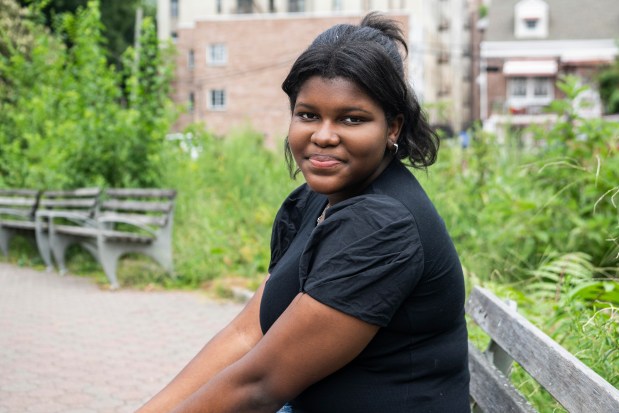SACRAMENTO, Calif. — When she was in fifth grade, Scarlett Goddard Strahan started to worry about getting wrinkles.
By the time she turned 10, Scarlett and her friends were spending hours on TikTok and YouTube watching influencers tout products for achieving today’s beauty aesthetic: a dewy, “glowy,” flawless complexion. Scarlett developed an elaborate skin care routine with facial cleansers, mists, hydrating masks and moisturizers.
One night, Scarlett’s skin began to burn intensely and erupted in blisters. Heavy use of adult-strength products had wreaked havoc on her skin. Months later, patches of tiny bumps remain on Scarlett’s face, and her cheeks turn red in the sun.
“If I had known my life would be so affected by this, I never would have put these things on my face,” says Scarlett, who recently turned 11.
Scarlett’s experience has become common, experts say, as preteen girls around the country throng beauty stores to buy high-end skin care products. Girls as young as 8 are turning up at dermatologists’ offices with rashes, chemical burns and other allergic reactions to products not intended for children’s sensitive skin.
“When kids use anti-aging skin care, they can actually cause premature aging, destroy the skin barrier and lead to permanent scarring,” says Dr. Brooke Jeffy, a Scottsdale, Arizona, dermatologist.
More than the physical harm, parents and child psychologists worry about the trend’s effects on girls’ mental health. Extensive data suggests a fixation on appearance can affect self-esteem and body image and fuel anxiety, depression and eating disorders.
The skin care obsession offers a window into the role social media plays in the lives of today’s youth and how it shapes the ideals and insecurities of girls in particular. Girls are experiencing record high levels of sadness and hopelessness. Whether social media exposure causes or simply correlates with mental health problems is up for debate. But to older teens and young adults, it’s clear: Extended time on social media has been bad for them, period.
Young girls’ fascination with makeup and cosmetics is not new. Neither are kids who hold themselves to idealized beauty standards. What’s different now is the magnitude, says Kris Perry, executive director of Children and Screens, a nonprofit that studies how digital media impacts child development.
“Girls are being bombarded with idealized images of beauty that establish a beauty standard that could be very hard — if not impossible — to attain,” Perry says.

The obsession with skin care is about more than the pursuit of perfect skin, explains 14-year-old Mia Hall.
It’s about belonging to a community that has the lifestyle and look you want, says Mia, a New Yorker from the Bronx.
Skin care was not on Mia’s radar until she started eighth grade last fall. At school and on social media, girls bonded over their skin care routines.
“I felt like it was the only way I could fit in,” says Mia. She started following beauty influencers on TikTok. Some influencers are paid by brands to promote their products, but they don’t always mention that.
Mia started saving her $20 weekly allowance for trips to Sephora. Her daily routine included a face wash, facial mist, hydrating serum, pore-tightening toner, moisturizer and sunscreen.
The level of detail and information girls are getting from beauty tutorials sends a troubling message as they are going through puberty and seeking their identities, says Charlotte Markey, a body image expert and Rutgers University psychology professor.
“The message to young girls is that, ‘You are a never-ending project to get started on now,”’ Markey says.
The beauty industry has been cashing in. Last year, consumers under age 14 drove 49% of drug store skin sales, according to a NielsonIQ report that found households with teens and tweens were outspending the average American household on skin care. And in the first half of 2024, a third of “prestige” beauty sales, at stores like Sephora, were driven by households with tweens and teens, according to market research firm Circana.
The industry has acknowledged certain products aren’t suitable for children but has done little to stop kids from buying them. Drunk Elephant’s website recommends kids 12 and under should not use their anti-aging serums, lotions and scrubs. That guidance is on the site’s FAQ page; there are no such warnings on the products themselves.
Ingredients like retinol and chemical exfoliants like hydroxy acids are inherently harsh. For aging skin, they are used to stimulate collagen and cell production. Young skin can react with redness, peeling and burning that can lead to infections, acne and hypersensitivity if used incorrectly, dermatologists say.
Mia’s mother, Sandra Gordon, noticed dark patches on her face last spring and became alarmed. She threw all her daughter’s products into the trash.
Mia wasn’t happy. But as she starts high school, she now feels her mother was right. She is using just a face wash and moisturizer and says her complexion has improved.
In Sacramento, California, Scarlett missed signs the products were hurting her skin: She developed a rash and felt a stinging sensation. Scarlett figured she wasn’t using enough of the products, so she layered on more. That’s when her cheeks erupted in blistering pain.
When her mother, Anna Goddard, read the ingredients in each product, she was shocked to find retinol in products that appeared to be marketed to children — including one with a cat’s face on the packaging.
Now, what worries her mother most is the psychological consequences. Kids’ comments at school have caused lingering anxiety and self-consciousness.
Goddard hopes to see more protections. “I didn’t know there were harmful ingredients being put in skin care that is marketed to kids,” she says. “There has to be some type of warning.”
___
The Associated Press’ education coverage receives financial support from multiple private foundations. AP is solely responsible for all content. Find AP’s standards for working with philanthropies, a list of supporters and funded coverage areas at AP.org.
Get more business news by signing up for our Economy Now newsletter.







